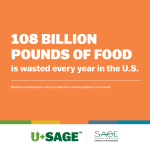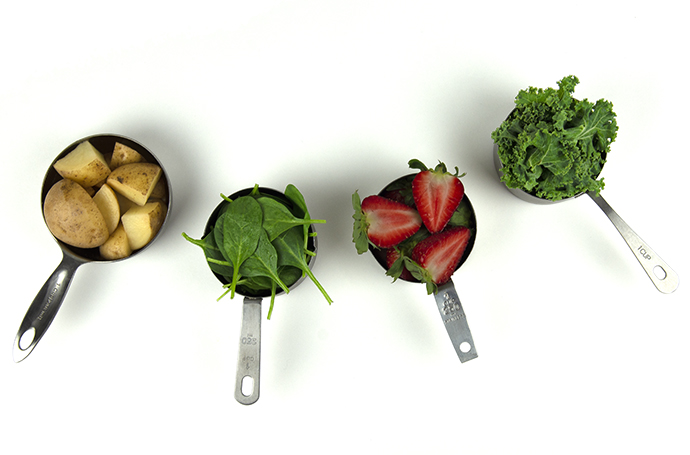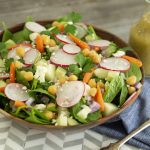New nutrition trends pop up almost daily, but one thing that has never changed is the recommendation to eat more fruits and vegetables! Physicians, dietitians, and parents have repeated this message — and it’s supported by science. The Dietary Guidelines for Americans recommend consuming about 5 cups of a variety of fruits and vegetables every day. Yet most people fall short. Only 12% of adults and 40% of children regularly meet daily fruit recommendations, and only 9% of adults and 7% of children meet the recommendation for vegetables, according to data from the Centers for Disease Control and Prevention. Why is that?
For some, buying fruits and vegetables is cost prohibitive; for others, taste is a factor. But the newest barrier to produce consumption is fear.
Consider how produce is discussed in the media, such as being deemed “dirty” because of pesticides or recommending limited fruit consumption because of the high level of sugar. There are attention-grabbing headlines with warnings about foods, but if you look deeper, you find the truth — that produce is safe to eat. When you buy fresh produce, remember to wash it thoroughly under clean running water regardless of whether it’s organic or conventionally grown.
The scientific community has questioned the Dirty Dozen™ list and the pesticide testing methodology of the Environmental Working Group. Critics argue that the Pesticide Data Program (PDP) published by the U.S. Environmental Protection Agency (EPA) ensures consumer safety based on extensive monitoring and testing. The PDP studies the actual exposure of pesticides to consumers, consistently finding that at least 99% of all samples had pesticide residues below tolerance levels established by the EPA.
Similarly, while fruits might contain the naturally occurring sugar fructose, they’re also high in valuable nutrients you don’t want to miss! Fruits and vegetables are rich in necessary nutrients that are best obtained by eating a variety of produce daily. These nutrients include vitamins A and C, potassium, and phytochemicals. Phytochemicals are a plant’s self-defense mechanism. They include anthocyanins, carotenoids, and polyphenols and are similarly protective to human cells when consumed. They’ve been linked to reduced risk of many chronic diseases, such as cancer, cardiovascular disease, and Alzheimer’s disease.
Fruits and vegetables are also high in fiber, which is a nutrient that most don’t get enough of. On average, people consume only about half the recommended amount. Since fiber isn’t digested in the stomach, it feeds the beneficial bacteria that live in the gastrointestinal tract, the gut microbiome, which is key in regulating the immune system. Fiber also helps maintain bowel regularity and has been linked to reduced risk of developing diabetes, cardiovascular disease, and some cancers.
Some people might worry that canned or frozen produce doesn’t have the same nutrients as fresh produce. Canned and frozen fruits and vegetables are usually processed immediately at the time of harvest, which means that they retain their valuable nutrients. When it comes to canned and frozen options, look for products that are low sodium and that aren’t processed with added sugar.
Eating more produce is always on trend! Try to eat a variety of fruits and vegetables every day to benefit from the power of produce.
Produce facts (per 1 cup, according to U.S. Department of Agriculture FoodData Central)
- Strawberries
- Fiber – 3.32 g (12% daily value)
- Vitamin C – 97.6 mg (160% DV)
- Spinach
- Fiber – 0.55 g (2% DV)
- Vitamin C – 7.02 mg (12% DV)
- Calcium – 24.8 mg (3% DV)
- Iron – 0.678 mg (4% DV)
- Potassium – 140 mg (3% DV)
- Vitamin K – 121 µg (100% DV)
- Kale
- Fiber – 0.845 g (3% DV)
- Calcium – 52.3 mg (5% DV)
- Vitamin C – 19.2 mg (32% DV)
- Vitamin K – 80.3 µg (67% DV)
- Potatoes
- Fiber – 4.7 g (17% DV)
- Potassium – 905 mg (19% DV)
- Magnesium – 49 mg (12% DV)









